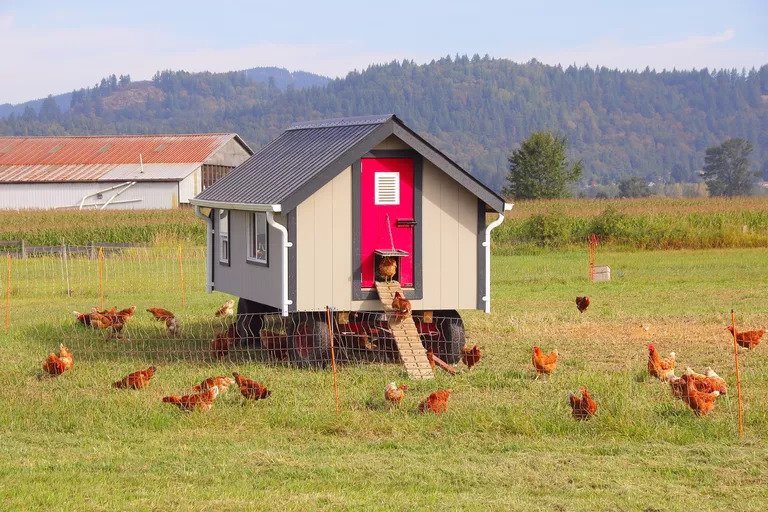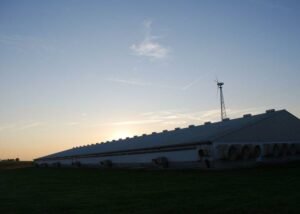Chicken tractors are movable chicken coops that can benefit both backyard breeders and small-time farmers. Sometimes on wheels and usually with a rope or some sort of pulley attached, chicken tractors lack a floor and allow chickens to graze in different areas of a pasture as the structure is moved. As chickens scratch and peck at the ground, they can naturally prepare and maintain garden areas, spreading manure and tilling future planting zones.
Chicken Tractor 101
Chicken tractors are typically moved every day or two, allowing the birds to graze on new vegetation. Chickens also eat various slugs, bugs, and snails that could harm a garden. Once the tractor is moved, manure left behind acts as a fertilizer. Some farmers use chicken tractors as part of a sustainable, value-added farm management system, in which chickens graze on grains like alfalfa and are then sold directly to local consumers. In this system, up to 100 broilers can occupy a 100-square-foot chicken tractor. Hens need more space, with a maximum of around 30 birds in the same square footage when the chickens are laying eggs.2
Almost all chicken tractors have an enclosed nesting area and a run for the chickens to move about, both enclosed within protective mesh wire and firmly connected to some sort of frame. Heavier frames are often on wheels, but that might not be necessary for tractors constructed with light wire mesh and tarp. Larger chicken tractors are sometimes pulled with trucks, but homesteaders more typically move them by hand, dragging the structure around a backyard or garden as needed.




